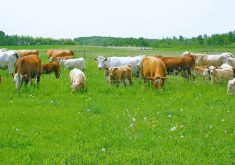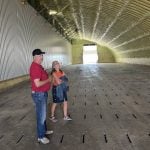Years ago at a conference, I participated in a world time clock exercise. Significant global events were mapped out on a straight line and participants stood on each of the spots and popped balloons in keeping with the occurrence of the major events. It was clear that much had happened in the last couple of centuries but that was just a blip in the grand scheme of things. It was also interesting how insignificant our presence here is with 80 or so odd years.
Time and how we perceive and use it is important. Maybe it is like the precipitation analogy often used. We cannot control the amount of rain that falls, but we can control the effectiveness of it once it hits the ground through our management practices.
Read Also

Picking the most efficient cows to rebuild your cow herd
A new cow ranking system to help beef farmers and ranchers pick the most efficient cows as they rebuild their herds.
One principle that helps us to think about how we allocate our time is Parkinson’s Law: Work expands so as to fill the time available for its completion. It is sometimes applied to the growth of bureaucracy in an organization.
I have also referenced this in financial planning, where we allow our expenses to rise to our level of income if we are not intentional about creating or setting aside a profit.
Another helpful tool is the Eisenhower matrix (see at top) which is about prioritizing our activities. It is a square divided into four quadrants. Along one side is urgency and the other is importance. The idea is to determine which activities fall into which quadrant and plan accordingly. It is important to regularly be intentional and prioritize. What falls into the not urgent and not important quadrants can perhaps be delegated or taken off the list.
Another point that has made me think about time and the passing of it is the close to two years of the COVID-19 pandemic. So often now when seeing someone, you have not seen each other for at least two years. But how is that possible? It only feels like a few months. Perhaps it says something about the strength of relationships or communities.
Timing is also important in our marketing strategies. The concept of buy low, sell high makes good sense but it is a tricky one to pull off. The market does operate in cycles. Unfortunately, it is a case of hindsight being 20/20, but there are general trends. So, should we consider marketing at a time when others are not? How does one go about that? Does it mean significant operational changes?
There are numerous jokes that the “true” test of a relationship is working livestock. Livestock behaviour experts such as the late Bud Williams and Dylan Biggs stress the importance of pressure and timing of it, plus taking the overall approach that we don’t need to be in a hurry. But that is so hard to take to heart, as there is always something else coming down the pipe. Trucks are going to be here, the brand man only has so much time, that one old cow always makes this hard, plus we don’t want them to stand too long and shrink.
A recent New York Times article by Mark Dent on the concept of work and time cites the four-day work week concept that is being suggested in Iceland versus the Elon Musk approach of constantly working. The notion of a four-day work week for those of us in agriculture with 24/7 responsibilities seems bizarre, but the article did go on to suggest that focusing on outcomes is the important component.
“That means working when we’re at our best, and around our family and health priorities,” Dent suggests.
Being able to choose when we can do our best work is something ag producers, for the most part, can do.
“By losing the structure of time and focusing on the results, we can get freedom back,” Dent adds.
Long-time holistic management practitioner and educator Don Campbell has a great parable he shares in his workshops.
He stands before the class and holds up a large, empty mayonnaise jar. On the table beside the jar are separate containers of golf balls, pebbles, sand and water. Campbell fills the jar with golf balls, and asks the group if the jar is full. Some will think so, but the rest don’t.
He then pours the pebbles into the mayonnaise jar and shakes it lightly so the pebbles settle into the open areas between the golf balls, again asking if the jar is full. Again, some will think so and some not. Next, Campbell pours sand into the mayonnaise jar and shakes it so that the sand fills up the remaining spaces between the pebbles. He again asks if the jar is full. This time, most of the group will think so. But perhaps one or two will disagree. He then pours a significant amount of water into the apparently full jar, filling all the invisible empty spaces between the golf balls, pebbles and sand.
Campbell asks, “What if I had put the water in first, or the sand, or the pebbles? The golf balls wouldn’t have fit into the jar without something overflowing. Pay attention to the big things that are most important to your life and happiness. If you put in the big stuff first — the stuff that really matters — the small stuff will find a way to fit in. And if it doesn’t, it is just sand, or pebbles, anyway.
Remember, time is precious and we should use it wisely.
















